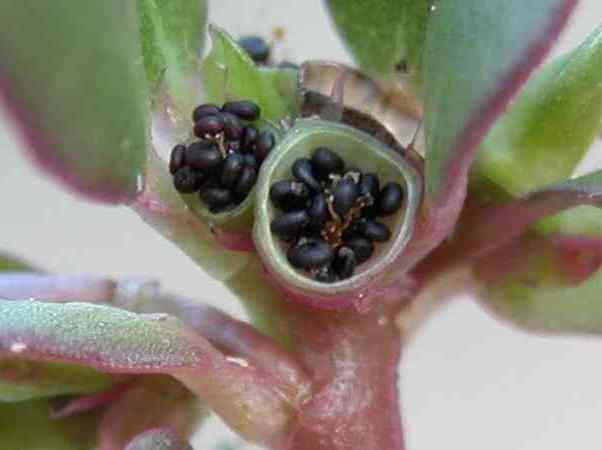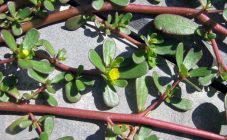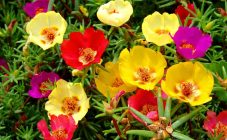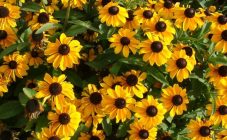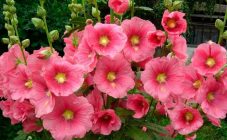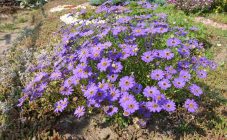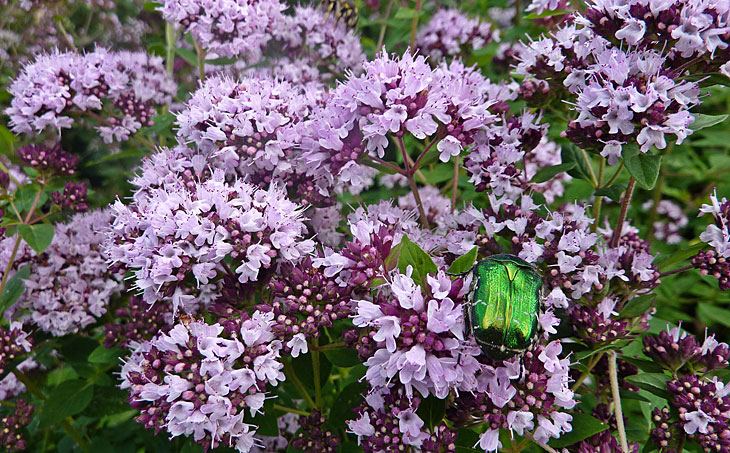Purslane is a flowering creeping plant, different varieties can be annual or perennial crops. There are many varieties: garden purslane, decorative purslane, large-flowered purslane, etc. There are types of this creeping culture that summer residents take for weeds and mercilessly fight them in the garden and vegetable garden.
Florists willingly grow perennial or annual purslane, not only in garden plots, but also in apartments. Because, according to experts, planting and caring for this flowering plant is not difficult. Often, beginners are advised to start growing flowers with a purslane - an annual or perennial.
Agrotechnics of culture
Under natural conditions, this plant grows freely in many countries of the American continents. Also, at present, these flowers can be found in many European countries, in Ukraine, in the countries of Central Asia and in the Far East. Under natural conditions, the plant reproduces by self-seeding.
In countries with warm climates, purslane is a perennial flower, but in most cool regions of Russia it is grown as an annual plant.
Purslane - growing a plant in a summer cottage in many regions of Russia begins with planting seeds for seedlings. And when conditions permit, the grown seedlings are transplanted into flower beds and lawns. But in warm regions, you can plant seeds directly in open ground.
Purslane is also grown on the balcony. How to grow purslane at home will be described below.
Reproduction of culture
Novice florists are interested in the question: how purslane multiplies, is it difficult to grow this plant. In fact, getting in and out is pretty simple.
You can propagate purslane not only by seeds, but also by cuttings. How to grow this creeping plant with seeds will be discussed a little later. It is also easy to grow this flower by cuttings. To do this, for the winter they bring the specimens they like into the house (in a cool room). In spring, cuttings up to 6 cm long should be cut, the lower leaves should be removed and planted in a prepared nutrient substrate. Containers with seedlings should be covered with polyethylene, periodically opened for ventilation and watering. Usually the cuttings take root within a month. After rooting, the polyethylene is removed, and the plants are planted in open ground (weather permitting).
Purslane - propagation of culture is a very simple procedure that can be performed even by a person who has never encountered flower cultivation before.
Planting seeds
How to plant purslane seeds? There is nothing complicated in this procedure. First, you should talk about purslane - how to plant seeds for seedlings.
When to sow purslane, each grower decides for himself. It is usually believed that the procedure for planting the seed of this flowering plant should be carried out from the last decade of February to the end of March. But it is better to postpone the process of planting seeds to April - during this period, the length of daylight hours increases significantly, so the seedlings will have enough sunlight.When planting seed at an earlier date, the seedlings will have to be supplemented in the morning and evening hours, installing fluorescent lamps next to the containers. Otherwise, the sprouts will reach for the light, their stems will be thin and weak.
Experts recommend preparing a nutritious soil mixture on your own at home, since in specialized stores the prepared soil contains a large amount of peat, which is not suitable for this flower. To prepare the nutrient substrate, garden soil is taken from vegetable beds and mixed with river sand in a ratio of 8: 2. The ingredients are thoroughly mixed and calcined in the oven to disinfect the resulting mixture.
All containers are thoroughly washed and disinfected beforehand. Drainage 3-4 cm thick is poured at the bottom; expanded clay or small crushed stone can be used as drainage material. Prepared soil is poured on top, tamped and watered. When all the moisture has been absorbed, you can start sowing seeds.
Purslane planting and care are very important procedures, the careful observance of which will determine how actively this plant will grow and bloom.
The seed for planting must lie for at least six months in order for the germination of the seed to be high. Seeds freshly harvested from plants have a very low emergence rate.
Seed material is laid out on the surface of the ground, slightly burying them into the soil. The distance between the seeds should be about a centimeter. From above, the containers are covered with polyethylene or glass and placed on the windowsill in the heat. The room temperature should be around 22 ° C. The created greenhouse microclimate in the containers allows the seedlings to appear faster. Usually the first shoots appear 6-8 days after planting.
The further course for the seedlings is also simple. After the mass appearance of sprouts, polyethylene is removed. The sprouts need warmth and good lighting. The room temperature must be maintained between 22 and 29 ° C. In cloudy weather, seedlings must be supplemented with special lamps.
You can carry out the diving procedure by transplanting two or three plants into separate pots. When transplanting, care should be taken not to damage the root system.
7 days after the picking procedure, the seedlings are fed for the first time. A solution of a combined mineral fertilizer is used as a top dressing. These seedlings should be fed regularly (once every 7 days) until they are transplanted to a permanent place.
Before planting seedlings in open ground, plants should carry out "air procedures", hardening the seedlings. To do this, they are taken out onto the balcony - at first for a short time, but every day increasing the duration of the seedlings' stay on the street.
For planting seed in flower beds or elsewhere, you should choose well-lit areas.
But first, the seeds are planted in a small area. The planting procedure will be as follows: the site is watered, then the seeds are mixed with moistened soil and a mini-greenhouse is installed on top, covering the planting with polyethylene. After the first shoots appear, polyethylene can be opened during the day for a couple of hours to ventilate the greenhouse. The shelter is completely removed when the ambient temperature reaches 22-23 ° C.
When the purslane has several permanent leaves, they can be transplanted to a permanent place in the flower bed. The first flowers on the purslane will appear in about a month and a half after germination.
The description of breeding purslane can be completed here.
Culture care
Caring for a purslane plant is also simple.In the garden, this flower will grow on any soil, even on sandstone. Any sort of purslane can retain its properties - unpretentiousness and undemanding care when grown in different regions of Russia.
In spring and summer, care for this flowering "rug" is the same - watering regularly, especially in hot and dry weather. Usually the irrigation regime is simple - once every 6-7 days. The plant grows rapidly, densely covering the entire area, therefore, when leaving, it is not required to apply top dressing, loosen the soil, and add mulch. Since purslane grows on any soil, fertilization is not necessary. Weeds interfere with the growth of purslane only at first, but when this flower grows, gardeners will not need to get rid of weeds - the plant itself will drown it out.
If we talk about decorative purslane, then you need to know - cultivation and care do not differ from similar procedures carried out with other varieties of this flowering annual.
Purslane is actively used in landscape design, especially if you need to close an empty space in the garden with beautiful plants. It is not difficult to care for all types of purslane, and it is simply impossible not to love this plant - after all, the colors of the blossoming purslane can be different - bright and pleasantly pleasing to the eye. The green color of the foliage is especially well combined with the red or yellow shades of the petals of the blossoming flowers.
Wintering culture
In the climatic conditions of Russia, only a garden type of purslane can be left to winter in the garden. All other varieties are too thermophilic and in winter they simply freeze out. Therefore, the flowering varieties of this plant are re-grown every year.
Usually, flower growers buy purslane seeds only once, and then they simply collect the seed material from the specimens they like for further planting. The collection of seeds is carried out as follows: when the boxes with the seed material are dry, they are simply collected, put in glass jars and stored in a dry place.
And the "rug" is simply removed from the site before the autumn digging. If summer residents want to admire the flowering of purslane all year round, the bushes they like are transplanted into pots for the winter and kept on the windows facing the south. But it should be remembered that in autumn and winter, when daylight hours are shortened, purslane should be supplemented.
As you can see, planting and caring for a purslane in open ground is within the power of even a novice florist.

